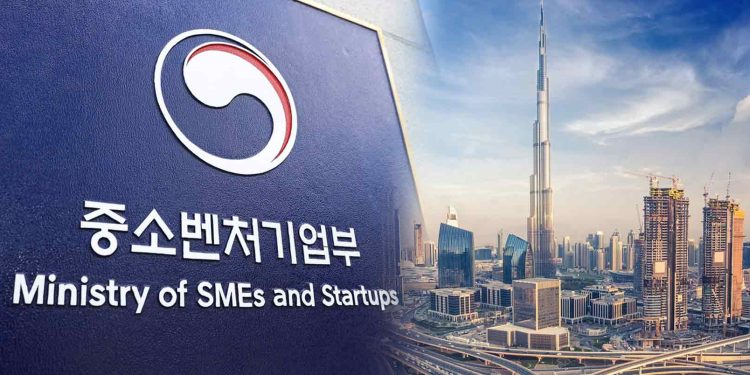Capital and connections are expanding beyond Silicon Valley, Shanghai, and other traditional markets for Korean startups. As global venture capital flows shift, the Ministry of SMEs and Startups is looking toward to the Middle East. With Saudi Arabia and the UAE emerging as high-growth investment markets, Korea’s latest move could redefine how its startups secure funding and scale internationally.
Korea’s Ministry of SMEs and Startups Strengthens Global Venture Footprint
The Ministry of SMEs and Startups (MSS) is widening Korea’s venture investment presence overseas, adding new hubs to connect domestic startups with global capital. The move signals a sharper focus on diversifying fundraising pathways and strengthening networks with international investors—critical levers for scaling Korean startups into new markets.
On August 28, MSS confirmed that its affiliate, Korea Venture Investment Corp. (KVIC), has commissioned a consulting study titled “Strategies for Globalizing the Venture Ecosystem and the Role of KVIC.”
The study, due by the end of 2025, will guide the ministry’s next steps in global venture investment, part of its broader initiative to position Korea among the world’s top four venture powerhouses.
Global Fund Model as a Launchpad
Korea’s global venture push builds on more than a decade of experience. Since 2013, MSS has managed the Global Fund program, which leverages the government’s Fund of Funds (Mother Fund) to invest through overseas venture capital firms. These funds are required to reinvest at least the equivalent of Korea’s contribution back into Korean startups.
This structure ensures that as Korea’s commitments grow, the scale of foreign investment into domestic startups increases proportionally. The approach has become a cornerstone of how the government channels international capital back into Korea’s venture ecosystem.
Expanding Beyond Asia and North America
Today, KVIC operates five overseas offices: Silicon Valley (2013), Shanghai (2014), Singapore (2015), London (2023), and Manhattan (2025). These hubs function as strategic outposts, strengthening ties between Korean founders and local venture investors.
But the ministry is now setting its sights further. Building on recent government-to-government partnerships, Korea plans to expand into the Middle East, targeting Saudi Arabia and the UAE as new destinations for venture investment activity.
In June, MSS initiated collaboration with the Saudi government to support Korean SME market entry in the region, underscoring a long-term strategic partnership.
Advantages for Startups and Investors
This expansion from South Korea means greater access for global investors to high-potential startups with strong government-backed pathways into Asian and Middle Eastern markets.
As for Korean founders, the benefits are twofold:
- Diversified capital flows from a broader investor base beyond the U.S. and China.
- On-the-ground support through expanded KVIC overseas offices, offering proximity to investors and faster routes to international scaling.
A KVIC official also explained:
“As global investment volumes grow year by year, related budgets and the number of funds are also increasing. Since most global investment hubs are still concentrated in the U.S. and China, we plan to expand additional overseas offices based on the research findings.”
Korea’s Global Venture Strategy in Context
This expansion is part of MSS’s “Top 4 Global Venture” powerhouse strategy, which aims to elevate Korea into the higher tier of global startup nations. By extending beyond traditional strongholds in North America and Asia into the Middle East, Korea is positioning its startups within new investor ecosystems at a time when cross-border capital flows are reshaping global venture markets.
Korea’s latest strategy demonstrates that Korea is strengthening both sides of the equation: bringing in overseas capital while exporting infrastructure to secure its startups a place in international innovation hubs.
– Stay Ahead in Korea’s Startup Scene –
Get real-time insights, funding updates, and policy shifts shaping Korea’s innovation ecosystem.
➡️ Follow KoreaTechDesk on LinkedIn, X (Twitter), Threads, Bluesky, Telegram, Facebook, and WhatsApp Channel.






